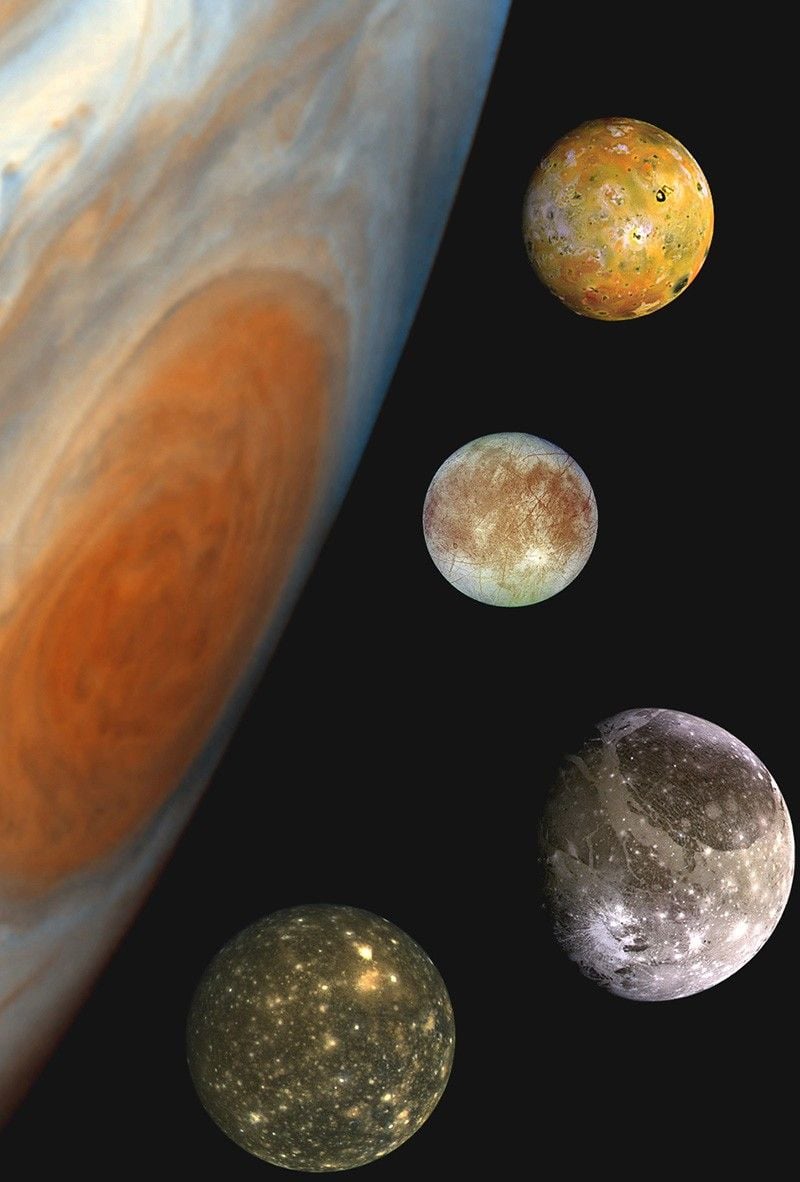The Three Body Problem isn’t just the name of a viral Netflix series or a Hugo Award winning sci-fi book. It also represents a really problem in astrodynamics – and one that can cause headaches to mission planners in terms of its complexity, but also one that offers the promise of an easier way to enter stable orbits that might otherwise be possible. A new paper from researchers at the Beijing Institute of Technology shows one way those orbital maneuvers might be enhanced while exploring planetary systems – by using a gravity assist from its moons.
Getting to one of the large planets that has many moons, and therefore that this system could work for, is energy intensive. Not only does a spacecraft have to get off of Earth, it also has to make its way to the planet, and then slow down on its approach to enter a stable orbit – unless it was specifically designed to do a flyby. All of these maneuvers cost energy, and that can be translated directly into fuel (i.e. weight), which itself can directly translate into cost. In other words, as well designed trajectory that saves even a little fuel can potentially save hundreds of thousands or millions of dollars of overall mission cost.
That appealing prospect has attracted a lot of researchers to the field of astrodynamics and in particular how to lower the amount of fuel required to achieve a specific orbit around a planet. One common practice in spacecraft flight plans is a gravity assist, but typically those result in the spacecraft careening around the end of a planet’s gravity well with a boost to its speed when it’s released back on a different trajectory. Using the same technique to “brake” a spacecraft is a relatively new idea.
Fraser explains how gravity assists work.
BepiColombo, a joint ESA and JAXA mission to researcher Mercury, is one of the first spacecraft to intentionally use gravity assists to slow down. It had multiple flybys of Earth, Venus, and even six of Mercury itself, before it will shed enough energy to end up in a stable orbit around Mercury, which is currently planned for late next year.
Other researchers had done some additional work on how the same idea might be applied to planets in the out solar system. Much of that work focuses on “Weak Stability Boundaries” (WSBs). At these points in space, the gravitational pull from two separate celestial bodies are almost balanced out, allowing a spacecraft traveling to that point to transition from a trajectory that would take it out of the system to one that orbits one of the bodies in the system.
To come up with those boundaries, rocket scientists first have to understand the system they are working with. One popular method is a technique called Poincaré Mapping. This puts a mathematical “plane” in a system and marks the position and velocity of an object crossing that plane every time it does so. With enough data points (which, critically, can be simulated), a path to a stable trajectory can be revealed over time.
BeppiColombo’s gravity assists have it slowing down rather than speeding up. Credit – ESA Space Science Hub YouTube Channel
The new contribution from the researcher’s paper was to use a planetary system’s Moons as potential gravity assist partners to enter into more possible stable orbits. WSBs are relatively rare in traditional Sun/Planet systems, but their number increases significantly when the gravitational alignment of the planet and its Moon are considered. Jupiter alone has 97 moons, and that can lead to a lot of potential gravity assist trajectories.
Putting their system into practice, the researcher simulated a gravity assist from Callisto, one of Jupiter’s four large Galilean moons. It showed a significant drop in the fuel requirements necessary for the mission to enter a stable orbit in the Jovian system. Unfortunately this new idea was too late to save the fuel costs of even modern missions like the Jupiter Icy Moon Explorer (JUICE).
Another potential use case, though this one is based on sheer luck rather than anything intentionally done by humans, is the potential capture of an interstellar object. A paper from 1979 by Jerry Cline (referenced by the more recent one) shows that the Neptune/Triton system would be adept at “catching” interstellar objects that were making their way through our solar system. But only if their natural trajectory is just right – and the likelihood of that happening is literally astronomical.
But the concept of using moons to slow down trajectories to a point where they can enable significant fuel saving is under our control, and could result in much less fuel costs for future missions. It also gives the rocket scientists interested in astrodynamics many more interesting scenarios to ponder over.
Learn More:
Z. Li, D. Qiao, & X. Li – Expanding gravitational capture sets via planetary moon flybys in Sun-planet systems
UT – The BepiColombo Mission To Mercury is Losing Power
UT – How Do Gravitational Slingshots Work?
UT – After a Boost from Earth and the Moon, Juice is On its Way to Venus and Beyond
